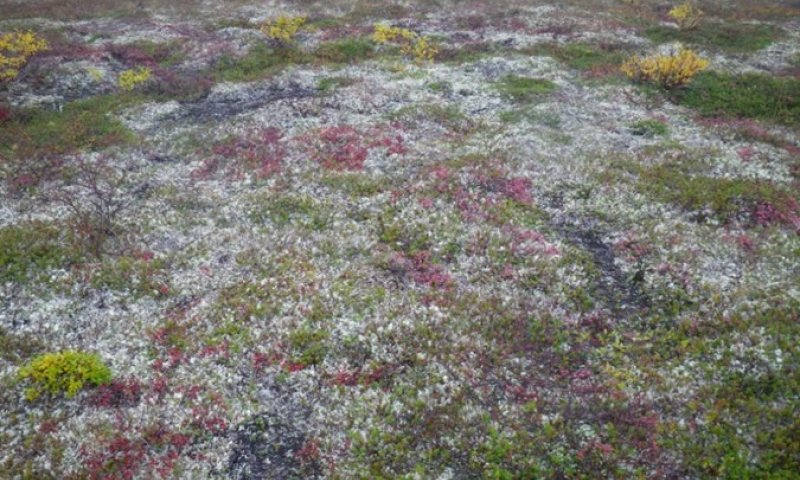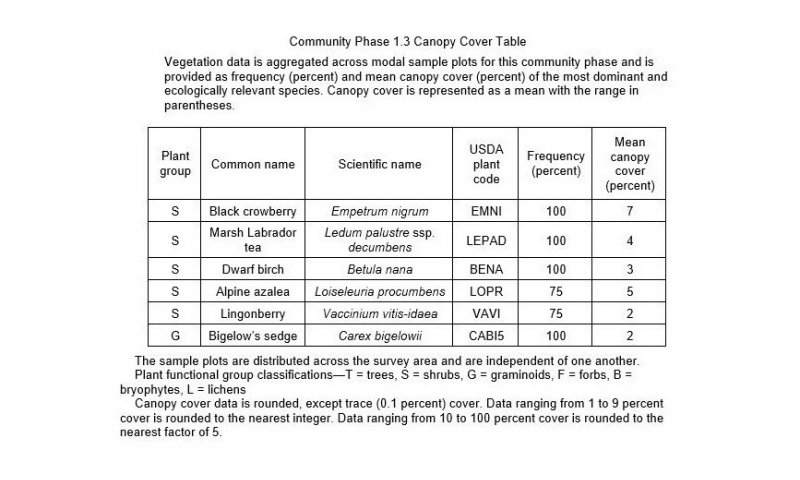

Natural Resources
Conservation Service
Ecological site R236XY132AK
Subarctic Dwarf Scrub Dry Loamy Slopes
Last updated: 2/13/2024
Accessed: 12/22/2025
General information
Provisional. A provisional ecological site description has undergone quality control and quality assurance review. It contains a working state and transition model and enough information to identify the ecological site.
MLRA notes
Major Land Resource Area (MLRA): 236X–Bristol Bay-Northern Alaska Peninsula Lowlands
The Bristol Bay-Northern Alaska Peninsula Lowland Major Land Resource Area (MLRA 236) is located in Western Alaska. This MLRA covers approximately 19,500 square miles and is defined by an expanse of nearly level to rolling lowlands, uplands and low to moderate hills bordered by long, mountain footslopes. Major rivers include the Egegik, Mulchatna, Naknek, Nushagak, and Wood River. MLRA 236 is in the zone of discontinuous permafrost. It is primarily in areas with finer textured soils on terraces, rolling uplands and footslopes. This MLRA was glaciated during the early to middle Pleistocene. Moraine and glaciofluvial deposits cover around sixty percent of the MLRA. Alluvium and coastal deposits make up a large portion of the remaining area (Kautz et al., 2012; USDA, 2006).
Climate patterns across this MLRA shift as one moves away from the coast. A maritime climate is prominent along the coast, while continental weather, commonly associated with Interior Alaska, is more influential inland. Across the MLRA, summers are general short and warm while winters are long and cold. Mean annual precipitation is 13 to 50 inches, with increased precipitation at higher elevations and areas away from the coast. Mean annual temperatures is between 30 and 36 degrees F (USDA, 2006).
The Bristol Bay-Northern Alaska Peninsula MLRA is principally undeveloped wilderness. Federally managed land includes parts of the Katmai and Aniakchak National Parks, and the Alaska Peninsula, Becharof, Togiak and Alaska Maritime National Wildlife Refuges. The MLRA is sparsely populated. Principal communities include Dillingham, Naknek, and King Salmon. Commercial fishing in Bristol Bay and the Bering Sea comprises a major part of economic activity in the MLRA. Other land uses include subsistence activities (fishing, hunting, and gathering) and sport hunting and fishing (USDA, 2006).
Classification relationships
Alaska Vegetation Classification:
Open low scrubland (II.C.2 - level III) / Open low mesic shrub birch-ericaceous shrubland (II.C.2.c - level IV)
(Viereck et al., 1992)
Ecological site concept
This ecological site is on linear to convex shoulders of hills and rolling glaciated plains. Site elevation is between 160 and 970 feet above sea level. Slopes are nearly level to strongly sloped. Site wind exposure, low water availability, limited soil development, and natural wildlife grazing pressure shape the vegetation on this landform.
The reference state supports three communities. The reference plant community is characterized as an open, low mesic scrubland (Viereck et al., 1992). It is composed of a mix of ericaceous and non-ericaceous shrubs with lichen throughout. The other communities on this site are a post-grazed community and a highly eroded community.
Associated sites
| R236XY130AK |
Subarctic Scrub Scrub Tundra Loamy Plains and Hills Both sites are on plains. R236XY130AK describes open, low scrublands on toeslopes. R236XY132AK describes a scrubland on exposed, convex rolling plain and hill shoulders. |
|---|---|
| R236XY131AK |
Subarctic Tussock-Scrub Frozen Plains Both sites are on plains. R236XY132AK is primarily associated with shoulders of rolling plains and hills. R236XY131AK describes a tussock tundra community in concave areas of plain slopes. |
| R236XY140AK |
Subarctic Tussock Tundra Wet Loamy Plains Both sites are on plain landscapes. R236XY140AK is on linear plain talfs, while R236XY132AK is on upslope, convex shoulders of rolling plains. Soils in R236XY140AK are comprised of organic material over loamy eolian deposits. This soil is poorly drained with frequent, brief ponding during the growing season. Soils in R236XY132AK are well drained and do not support the hydrophytic communities of R236XY140AK. |
Similar sites
| R236XY130AK |
Subarctic Scrub Scrub Tundra Loamy Plains and Hills Both sites are on plains. R236XY130AK describes open, low scrublands on toeslopes. Soil is wetter in these positions than on the convex shoulder positions described by R236XY132AK. There is vegetative overlap in the species found in these sites but the community composition and community phases are different. |
|---|---|
| R236XY131AK |
Subarctic Tussock-Scrub Frozen Plains Both sites are on plains. R236XY132AK is primarily associated with shoulders of rolling plains and hills. R236XY131AK describes a tussock tundra community on organic permafrost soils in concave areas. The soil hydrology in concave areas, along with frost heave due to underlying permafrost, are distinctly different than the well drained soils and corresponding vegetation of convex plain slopes. |
Table 1. Dominant plant species
| Tree |
Not specified |
|---|---|
| Shrub |
(1) Betula nana |
| Herbaceous |
(1) Carex bigelowii |
Click on box and path labels to scroll to the respective text.
Ecosystem states
State 1 submodel, plant communities
| 1.1A | - | Grazing. |
|---|---|---|
| 1.1B | - | Overgrazing and wind erosion. |
| 1.2A | - | Decreased grazing pressure. |
| 1.3A | - | Overgrazing and erosion recovery. |





